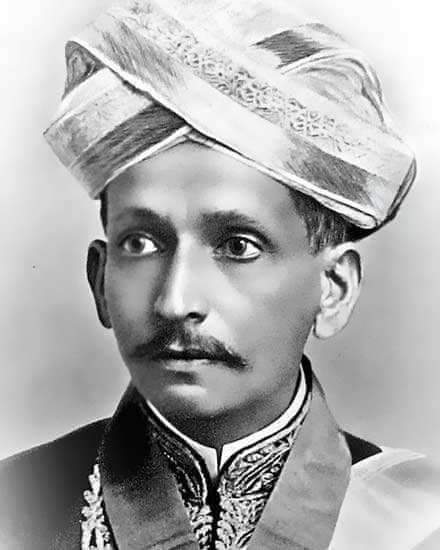
Biography of Mokshagundam Visvesvaraya
Mokshagundam Visvesvaraya, one of India’s most renowned engineers, was born on September 15, 1860, in the village of Muddenahalli near Bangalore, in present-day Karnataka. His parents, Srinivasa Shastri and Venkayamma, came from a humble background. The family originally hailed from Mokshagundam village in Kurnool district, but due to financial difficulties, they migrated to the Mysore region. Visvesvaraya’s father was a respected Sanskrit scholar and Ayurvedic physician who often traveled to earn a living. With his father frequently away, the responsibility of raising the family fell on his devout mother, who instilled in young Visvesvaraya both education and discipline.
Visvesvaraya’s early education took place in Chikballapur, where his talent was quickly recognized by his teachers, especially in mathematics. One of his mentors, Sri Nadamuni Naidu, gave him special attention and helped him excel in the subject. With the financial assistance of his uncle, Mr. Ramaiah, Visvesvaraya pursued a B.A. at Central College in Bangalore. Unfortunately, during this time, at the age of 15, he lost his father, which deeply affected him. Despite this personal tragedy, he continued his education, tutoring students to support himself, and eventually completed his B.A.
With the support of the Maharaja of Mysore, who recognized his potential, Visvesvaraya went on to study engineering at the College of Engineering in Pune (then Poona). After completing his studies, he began his career as a government engineer in Bombay (now Mumbai). During his tenure, he played a significant role in transforming Bombay into a modern city.
In 1908, Visvesvaraya was invited by the Nizam of Hyderabad to join his government as an engineer. His expertise led to the construction of several reservoirs, and he played a crucial role in modernizing Hyderabad. Recognizing his brilliance, the Nizam promoted him to the position of Diwan in 1912. Among his many achievements, Visvesvaraya designed a system to protect the Visakhapatnam dock from sea erosion, a testament to his engineering prowess and dedication. Known for his unwavering discipline, he often worked 18 hours a day, a commitment that earned him great respect.
After his tenure with the Nizam, Visvesvaraya returned to the Mysore State, where he contributed significantly to its development. He was instrumental in projects such as the construction of the Krishnaraja Sagar Dam, the creation of Brindavan Gardens, and the establishment of Mysore University. He also founded the Bank of Mysore, encouraging middle-class families to adopt the habit of saving.
Visvesvaraya was not only a celebrated engineer but also an accomplished economist. His contributions earned him numerous accolades, including doctorates from several universities across India. In 1917, he played a key role in establishing the Government Engineering College in Bangalore, which was later renamed Visvesvaraya College of Engineering in his honor.
The British Government knighted him with the title “Sir” in recognition of his achievements, and in 1955, the Government of India bestowed upon him the prestigious ‘Bharat Ratna,’ the highest civilian award in the country.
Sri Mokshagundam Visvesvaraya passed away on April 12, 1962, at the age of 101, leaving behind a legacy of excellence, dedication, and integrity. His life continues to inspire generations of engineers, and his birthday, September 15, is celebrated as Engineer’s Day in India. His commitment to hard work, ethics, and discipline serves as an enduring example for all.
Visvesvaraya’s life is a testament to the belief that work and duty are sacred, and by upholding these values, we pay tribute to his lasting legacy.


